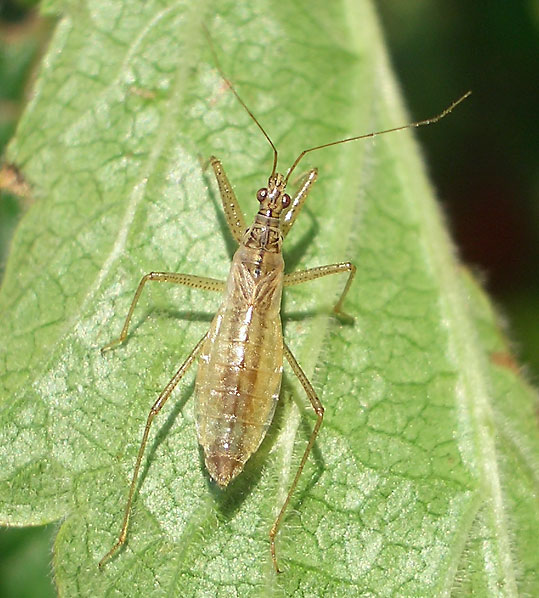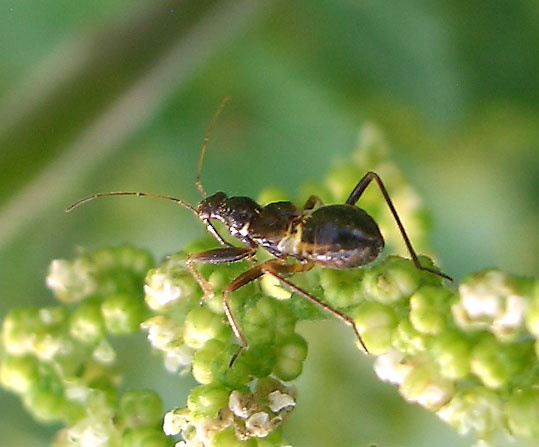
Home > Phylum selection > Arthropoda > Heteroptera > Nabidae > Overview
Home How to cite this site Terms & conditions Disclaimer Contact Site tutorial / Help Links |
Familia Nabidae Sichelwanzen |
|
The Nabidae are a
group of about 500 species worldwide distributed
on all continents (examples from the German
fauna are shown in Fig. 1). They comprise two
subfamilies, Nabinae and Prostemmatinae. The
latter are robust species with strong forelegs
that are used for prey capture. The Nabinae are
more slender and their forelegs are rarely used
for prey capture.
Species of the German fauna range in size between 4 and 12 mm. They have a bent proboscis that is similar to the proboscis of the Reduviidae, but has one segment more (4 instead of 3). In the larger species the proboscis is strong enough to penetrate the human skin and the bite is very painful. Many species display a wing polymorphism where fully winged specimens are rare. The males of most species have a secretory organ at the end of the abdomen that secretes pheromones which are distributed with special hair fields (Ekblom´s combs) on the hind leg tibiae. The members of the Nabinae are green or brown providing camouflage to their habitat on the ground or on green plants. Most members of the Prostemmatinae, on the other hand, display warning colors (red, black and white). All species are predatory and feed on other arthropods and their developmental stages (including eggs). Some species have a very narrow prey spectrum, but most species are polyphagous. Some polyphagous species are important in ecological pest species control programs. The copulation is intravaginal. In the Nabinae the spermatozoa reach the eggs in the ovarioles via the sperm ducts. However, in the Prostemmatinae the male phallus penetrates the vagina wall and the sperm is injected into the body cavity of the female (so-called traumatic insemination). The sperm cells reach the ovarioles via the haemocoel and have to penetrate their wall to reach the eggs. The females possess ovipositors to deposit the eggs in plant tissue. In some species the eggs overwinter, but most species overwinter as imago. The Nabidae belong to the taxon Cimicomorpha, but the phylogenetic relationships within the Cimicomorpha are unclear. The Nabidae seem to be closely related to the Anthocoridae. The Nabidae themselves are subdivided in two subfamilies, Prostemmatinae and Nabinae. Sometimes two additional subfamilies, Velocipedinae and Medocostinae (both only known from palaeotropical areas), are recognized, but most authors regard them as separate families. |
|
| This page has
been updated on January 28, 2013 This site is online since May 31, 2005 Copyright © by Nikola-Michael Prpic-Schäper. All rights reserved. |
Species list References  |

